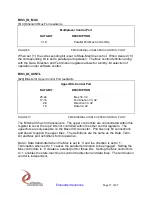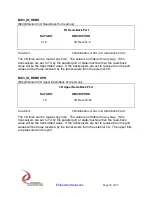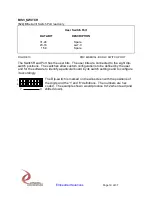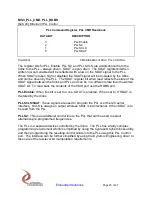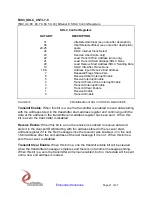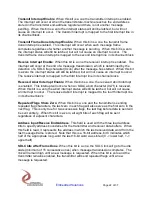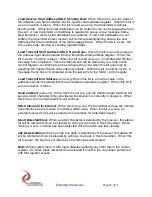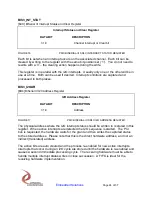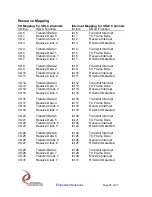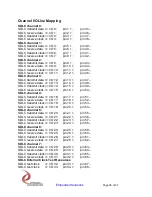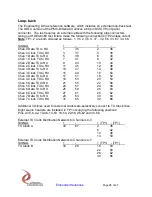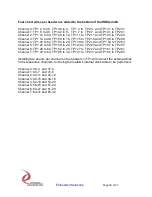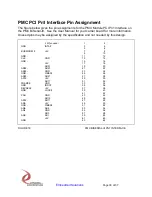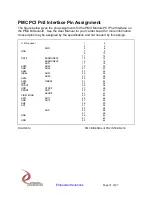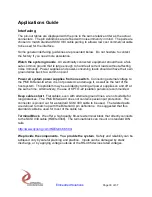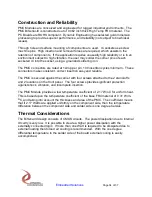
Embedded Solutions
Page 20 of 37
BIS3_PLL_CMD, PLL_RDBK
[$28, 2C] BiSerial III PLL Control
PLL Command Register, PLL CMD Read-back
DATA BIT
DESCRIPTION
3
PLL Enable
2
PLL S2
1
PLL SCLK
0
PLL SDAT
FIGURE 14
PMC BISERIAL-III SDLC PLL CONTROL
The register bits for PLL Enable, PLL S2, and PLL SCLK are unidirectional from the
Xilinx to the PLL
– always driven. SDAT is open drain. The SDAT register bit when
written low and enabled will be reflected with a low on the SDAT signal to the PLL.
When SDAT is taken high or disabled the SDAT signal will be tri-stated by the Xilinx,
and can be driven by the PLL. The SDAT register bit when read reflects the state of the
SDAT signal between the Xilinx and PLL and can be in a different state than the written
SDAT bit. To read back the contents of the CMD port use the RDBK port.
PLL Enable
: When this bit is set to a one, SDAT is enabled.
When set to ‘0’ SDAT is
tri-stated by the Xilinx.
PLL
SCLK
/
SDAT
: These signals are used to program the PLL over the I2C serial
interface. SCLK is always an output whereas
SDAT
is bi-directional. When SDAT is to
be read from the PLL
PLL S2
: This is an additional control line to the PLL that can be used to select
alternative pre-programmed frequencies.
The PLL is a separate device controlled by the Xilinx. The PLL has a fairly complex
programming requirement which is simplified by using the Cypress® CyberClocks utility,
and then programming the resulting control words into the PLL using this PLL Control
port. The interface can be further simplified by using the Dynamic Engineering driver to
take care of the low-level bit manipulation requirements.












